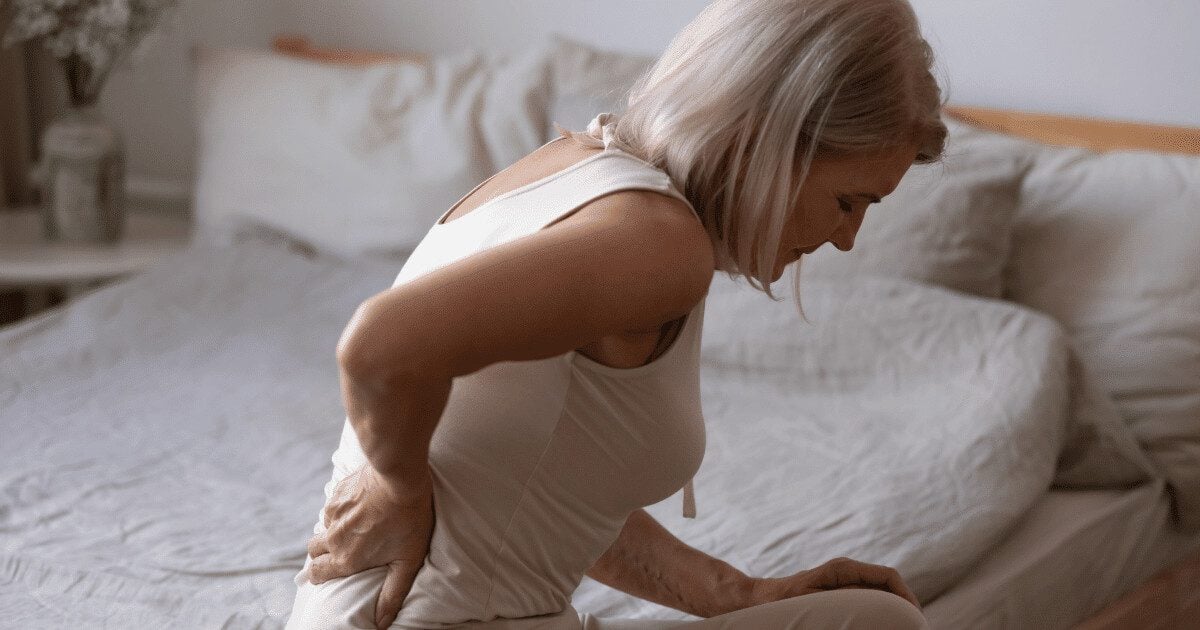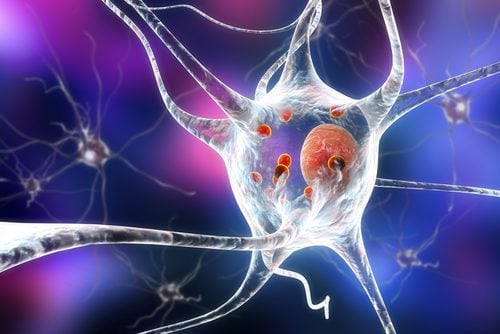As of yet, no cause of ALS has been determined, but there is a genetic component. About 5 to 10% of ALS patients have a family member that also has the disease.¹ This implies that although genetics plays a role in determining who gets ALS, it is not the only factor involved. It may be true that a genetic mutation in the family line makes a person more susceptible to whatever it is that ultimately causes the disease.² Environmental factors also seem to play a part, as do elements of lifestyle like smoking and being obese, which make a person more likely to contract the disease.
Symptoms of Early-Stage ALS
The symptoms of the early stage of ALS are rather general and could be the result of many different ailments. Still, anyone exhibiting some of these symptoms should be tested for ALS.
Not all people who have ALS will suffer from the same symptoms in the same order, however. Any or all of the early-stage symptoms could present themselves either simultaneously or separately.³
Problems with Appendages
When the neurons that control the legs and feet are affected, patients will notice increased clumsiness; weakness in the legs, ankles, or feet; muscle spasms, cramps, or stiffness of the legs and feet; and difficulty walking. This is also known as limb-onset ALS.

If the neurons that control the hands and arms have begun to degenerate, patients will start to drop things when the nerves that control the opening and closing of the fingers stop responding to messages sent from the brain. They may also observe weakness, cramping, stiffness, or spasms in the arms, shoulders, and hands.
Regardless of which appendages are affected in the early stage of ALS, persistent fatigue and difficulty accomplishing daily tasks may also be symptoms.
Problems with Body, Face, or Neck
If the nerves that control the movements and sensations of the face are affected in the early stage of ALS, patients may experience trouble speaking, including slurred words, trouble chewing and swallowing, and muscle twitches in the tongue. This is also known as bulbar ALS.
When the nerves of the neck and body are damaged, stiffness and muscle spasms may occur in the neck, back, and shoulders, as well as difficulty with breathing due to weakness in the diaphragm.

Respiratory Challenges in ALS
Amyotrophic Lateral Sclerosis (ALS) often impacts respiratory muscles, leading to difficulties in breathing. One of the early signs is shortness of breath, even during rest.
This symptom can be subtle at first but progressively worsens, significantly affecting quality of life. It’s crucial for patients and caregivers to monitor these changes closely for early intervention.
Weak Cough in ALS
As ALS progresses, the muscles used for coughing weaken. A weak cough is not just uncomfortable; it increases the risk of respiratory infections by hindering the clearing of airways. Patients may need mechanical aids and specific techniques to assist with coughing, ensuring better lung health.
Throat Problems
Difficulty in clearing the throat and lungs is a common issue for ALS patients. This symptom can lead to discomfort and increases the risk of choking. Speech and language therapists can offer strategies to manage this symptom, improving safety and comfort during meals and conversations.
Excessive Saliva
Excess saliva production, or sialorrhea, is a symptom that many ALS patients face. This can cause discomfort and social embarrassment. Management may include medications to reduce saliva production or simple posture adjustments. In some cases, minor surgical procedures are considered.
Cognitive Problems
The cognitive issues associated with the early stage of ALS can be easily missed or attributed to other causes. These include:
- Changes in cognitive abilities
- Behavioral changes
- Increased irritability
- Yawning, laughing, or crying unexpectedly and inappropriately
Symptoms of Middle-Stage ALS
As ALS progresses to the middle stage and more of the neurons are affected, many of the symptoms experienced earlier in the disease will become more pronounced, and/or be expanded upon with additional symptoms at a greater frequency.5
Patients may experience locking of the joints, degradation of the nerves that control the muscles near them, and/or the permanent contraction of muscles. There will be profound weakness or complete paralysis of the muscles of the appendages, which results in the inability to walk, and loss of use in the hands and arms.
As the nerves of the face and throat become more damaged, patients encounter drooling and the inability to chew. As the nerves of the body break down, existing difficulty with breathing results in the inability to cough.
Cognitive issues during this stage may lead to drastic mood swings.
Here are some specific symptoms of middle stage ALS:
Increased Muscle Weakness
Muscle weakness, which begins in early-stage ALS, becomes more pronounced in the middle stage. This weakness often leads to greater difficulty in performing daily activities such as walking, dressing, and handling objects. Mobility aids like walkers or wheelchairs may become necessary.
Muscle Atrophy and Spasticity
As the muscles receive fewer nerve signals, they start to shrink (atrophy). Spasticity, or muscle stiffness, can also occur, leading to discomfort and difficulty in movement. Physiotherapy may help in maintaining mobility and reducing discomfort.
Speech Impairment
Speech often becomes more affected during this stage. The voice may become slurred and harder to understand. Speech therapy can assist in finding alternative ways of communication, such as using speech-generating devices or apps.

Difficulty Swallowing (Dysphagia)
Swallowing problems become more noticeable, increasing the risk of choking or aspiration pneumonia. Modifications in diet and eating techniques, as advised by a speech and language therapist, can help manage these risks.
Breathing Difficulties
Respiratory muscles weaken further, leading to more pronounced breathing difficulties, especially when lying down. Non-invasive ventilation may be suggested to assist breathing, particularly during sleep.
Changes in Emotional Expression (Pseudobulbar Affect)
ALS can affect emotional regulation, causing involuntary and exaggerated emotional responses, such as laughing or crying, known as pseudobulbar affect. This can be distressing but is treatable with medication and counseling.
Cognitive Changes
While not universal, some individuals may experience mild cognitive changes during the middle stages of ALS. These changes can include problems with concentration, planning, and sometimes changes in personality.
Increased Dependence on Care
As muscle function declines, dependence on caregivers for daily activities increases. It’s essential to plan for adequate care support and to modify the living environment to accommodate mobility aids and other assistive devices.
Pain and Discomfort
Pain may arise due to muscle stiffness, joint strain, or immobility. Pain management strategies, including medication, physical therapy, and proper positioning, are vital to maintain comfort.
Nutrition and Weight Management
Maintaining adequate nutrition becomes more challenging due to swallowing difficulties. Nutritional support, possibly including feeding tubes, may be required to ensure proper nourishment and hydration.
Managing Emotional and Mental Health
Living with progressing ALS can be emotionally challenging. Psychological support for both the patient and family, including counseling and support groups, can be beneficial.
Planning for Future Care
As ALS progresses, it’s important to discuss and plan for future care needs, including advanced directives and preferences for end-of-life care.
Understanding and managing these symptoms effectively can significantly improve the quality of life for someone in the middle stages of ALS. It’s crucial for patients, caregivers, and healthcare providers to work closely together to address these challenges.
Symptoms of Late-Stage ALS
In this final stage of ALS progression, the patient has become severely affected and disabled. They are likely bedridden and may no longer be capable of caring for themselves. Symptoms of this stage include:6
- Inability to breathe on their own
– At some point in this stage, a breathing tube will be inserted as the muscles that control the diaphragm and lungs cease to have the strength to pull air into the lungs. - Inability to swallow
– A feeding tube may be inserted to ensure that the patient receives enough fluids and nutrition. - Most voluntary muscles that control the arms, legs, face, and back, are paralyzed
– Patients are also no longer able to speak.
At this point, many ALS sufferers are plagued by a host of opportunistic diseases that take advantage of the body’s weakened state. Illness like pneumonia, influenza, and other viral infections may worsen the physical state of the patient and cause many deaths related to ALS.7
Complications of Late-Stage ALS
While treatments and therapies can delay the progression of the disease, there is no cure for the disease itself. Over time, the motor neurons will continue to degenerate, resulting in the partial or total paralysis of all voluntary and many involuntary muscles.
Most ALS patients ultimately pass due to respiratory failure, either from the progression of the disease itself or from infections of the lungs. Others, though, may succumb to heart failure brought on by the demands of trying to keep the body oxygenated without sufficient air moving through the lungs.8
Malnutrition, dehydration, and weight loss are common problems that may shorten a patient’s life with late-stage ALS as well.
Severe Muscle Weakness and Paralysis
In the late stages of ALS, muscle weakness typically progresses to paralysis. Patients may lose the ability to move their arms and legs, and muscles in the trunk of the body become affected. This severe muscle weakness requires comprehensive care, including assistance with all daily activities.
Advanced Respiratory Difficulties
Respiratory function continues to decline in late-stage ALS. Patients may require permanent ventilatory support as the muscles needed for breathing weaken. Monitoring for respiratory infections and maintaining lung health are critical aspects of care.
Complete Dependence for Care
At this stage, patients are usually completely dependent on caregivers for daily needs such as feeding, bathing, and mobility. The role of caregivers becomes more demanding, and professional home health care services or hospice care may be necessary.
Communication Challenges
With the progression of ALS, speaking becomes increasingly difficult or impossible. Alternative communication methods, such as eye-tracking devices or speech-generating devices, can play a vital role in helping patients communicate with their loved ones and caregivers.
Feeding and Nutrition Issues
Swallowing difficulties often necessitate the use of feeding tubes in late-stage ALS. Ensuring proper nutrition and hydration is essential for maintaining the patient’s health and comfort.
Increased Risk of Infections
Due to the compromised mobility and respiratory function, the risk of infections, including pneumonia, is higher. Preventive measures, vigilant monitoring, and prompt treatment of any infections are essential.
Pain and Discomfort Management
Pain, resulting from muscle stiffness, joint deformities, or immobility, can be a significant issue. Pain management strategies, including medications and proper positioning, are vital to ensure patient comfort.
Cognitive and Behavioral Changes
While cognitive function may remain intact, some patients with ALS might experience cognitive and behavioral changes, such as impaired decision-making or emotional lability. It’s important to approach these changes with understanding and professional support.
Frequently Asked Questions:
What does early-stage ALS feel like?
Early symptoms of ALS involve frequent cramping, muscle tightness, muscle weakness, and twitching.
How fast does ALS progress after the first symptoms?
ALS can progress over a five-year period after diagnosis. A small percentage of ALS patients can survive for longer than that.
Where do ALS muscle twitches start?
Muscle fasciculations start at the tips of nerves, where they come close to being in contact with the muscle.
Can ALS symptoms fluctuate?
ALS symptoms generally do not fluctuate like those of some other neurological diseases. Instead, they progressively worsen over time.
SOURCES
1. Mayo Clinic Staff. Amyotrophic Lateral Sclerosis (ALS). Mayo Clinic. https://www.mayoclinic.org/diseases-conditions/amyotrophic-lateral-sclerosis/symptoms-causes/syc-20354022
2. Office of Neuroscience Communications and Engagement. (May 26, 2021). Amyotrophic Lateral Sclerosis (ALS) Fact Sheet. Ninds.nih.gov. https://www.ninds.nih.gov/health-information/patient-caregiver-education/fact-sheets/amyotrophic-lateral-sclerosis-als-fact-sheet
3. Office of Neuroscience Communications and Engagement. (May 26, 2021). Amyotrophic Lateral Sclerosis (ALS) Fact Sheet. Ninds.nih.gov. https://www.ninds.nih.gov/health-information/patient-caregiver-education/fact-sheets/amyotrophic-lateral-sclerosis-als-fact-sheet
4. Muscular Dystrophy Association. Amyotrophic Lateral Sclerosis (ALS). MDA. https://www.mda.org/disease/amyotrophic-lateral-sclerosis/signs-and-symptoms/stages-of-als Amyotrophic Lateral Sclerosis (ALS)
5. Muscular Dystrophy Association. Amyotrophic Lateral Sclerosis (ALS). MDA. https://www.mda.org/disease/amyotrophic-lateral-sclerosis/signs-and-symptoms/stages-of-als
6. Office of Neuroscience Communications and Engagement. (May 26, 2021). Amyotrophic Lateral Sclerosis (ALS) Fact Sheet. Ninds.nih.gov. https://www.ninds.nih.gov/health-information/patient-caregiver-education/fact-sheets/amyotrophic-lateral-sclerosis-als-fact-sheet
7. Melinosky, C. (November 24, 2021). What Is ALS? What Are the Types and Causes? WebMD. https://www.webmd.com/brain/understanding-als-basics





